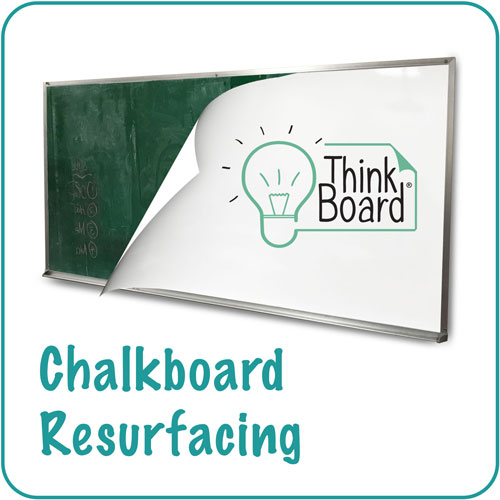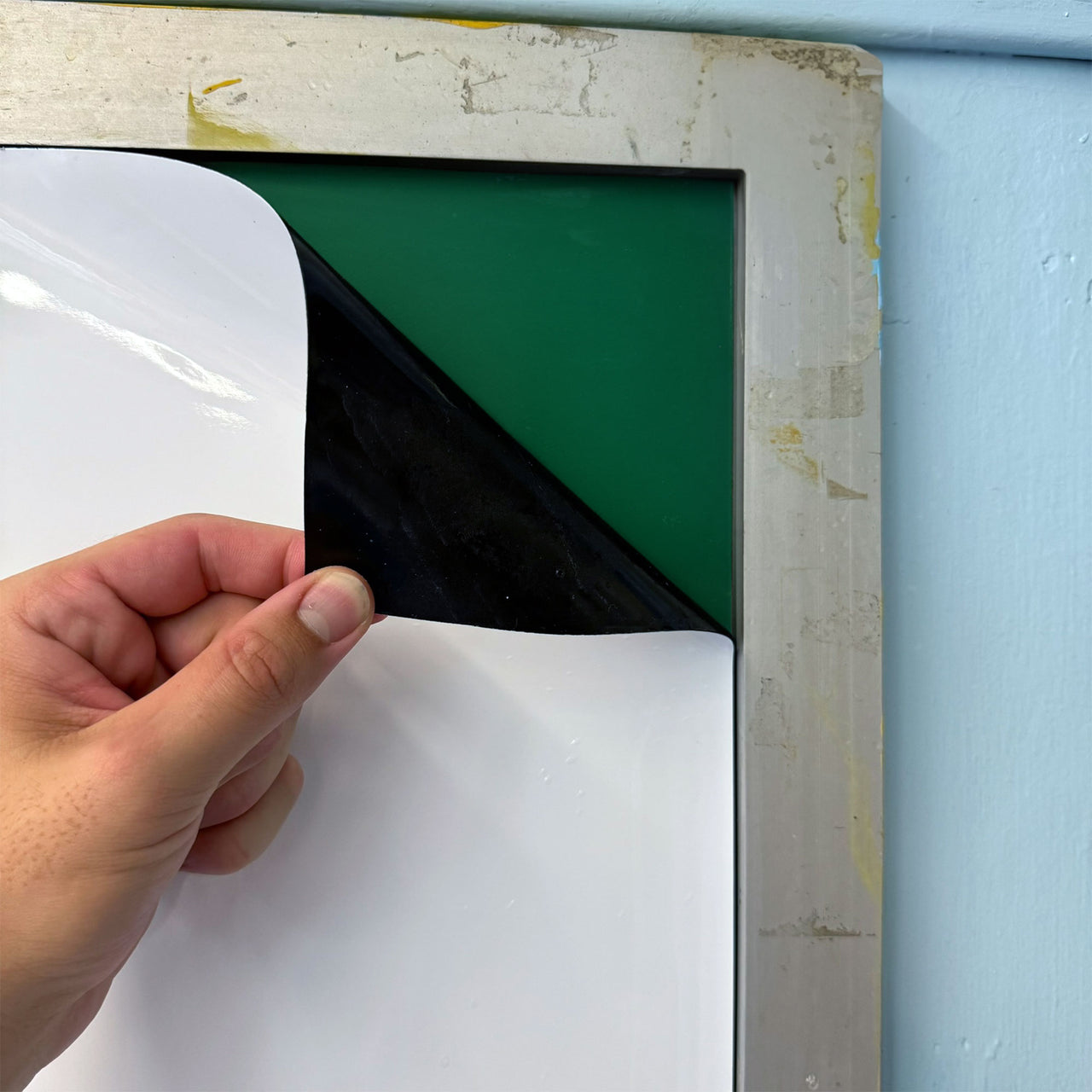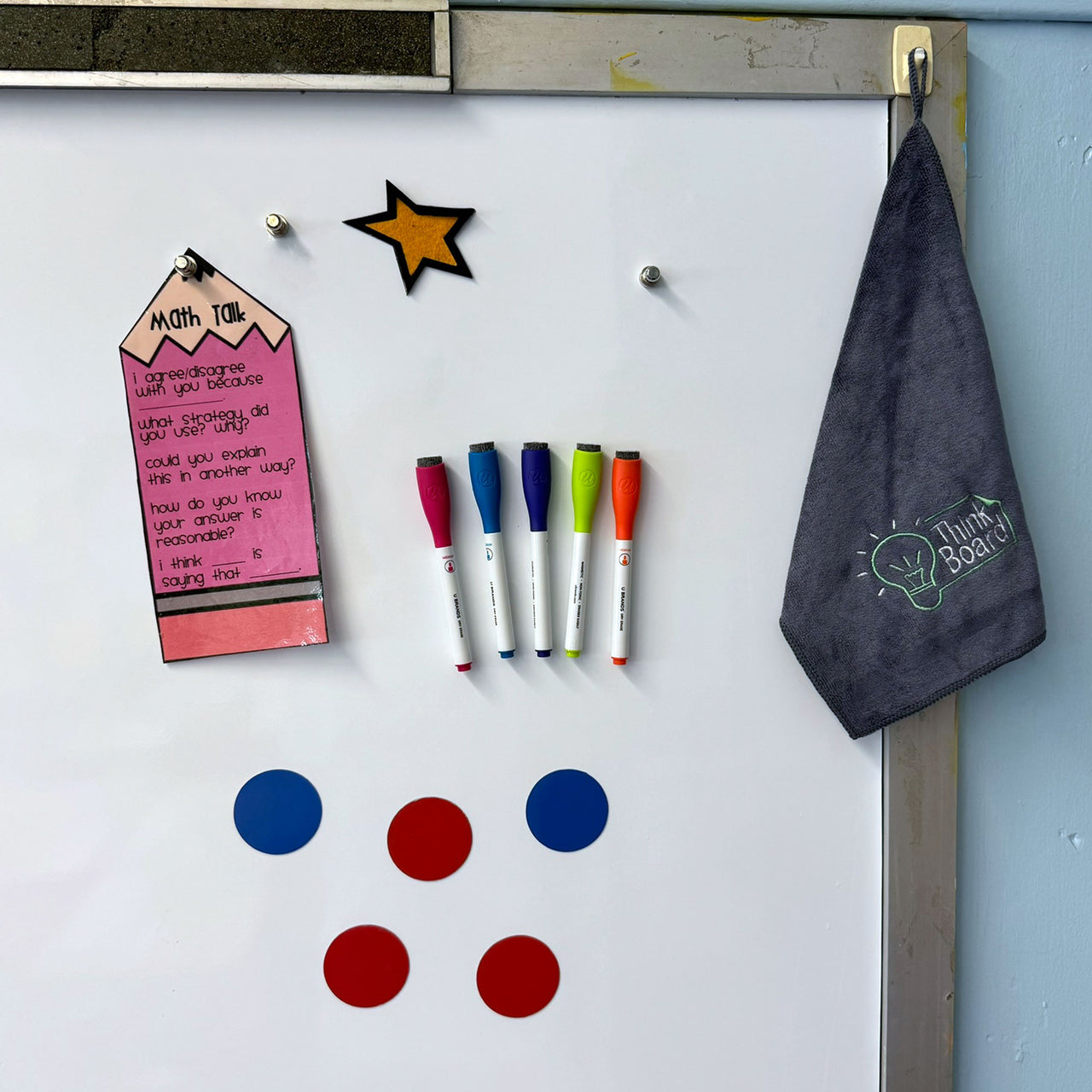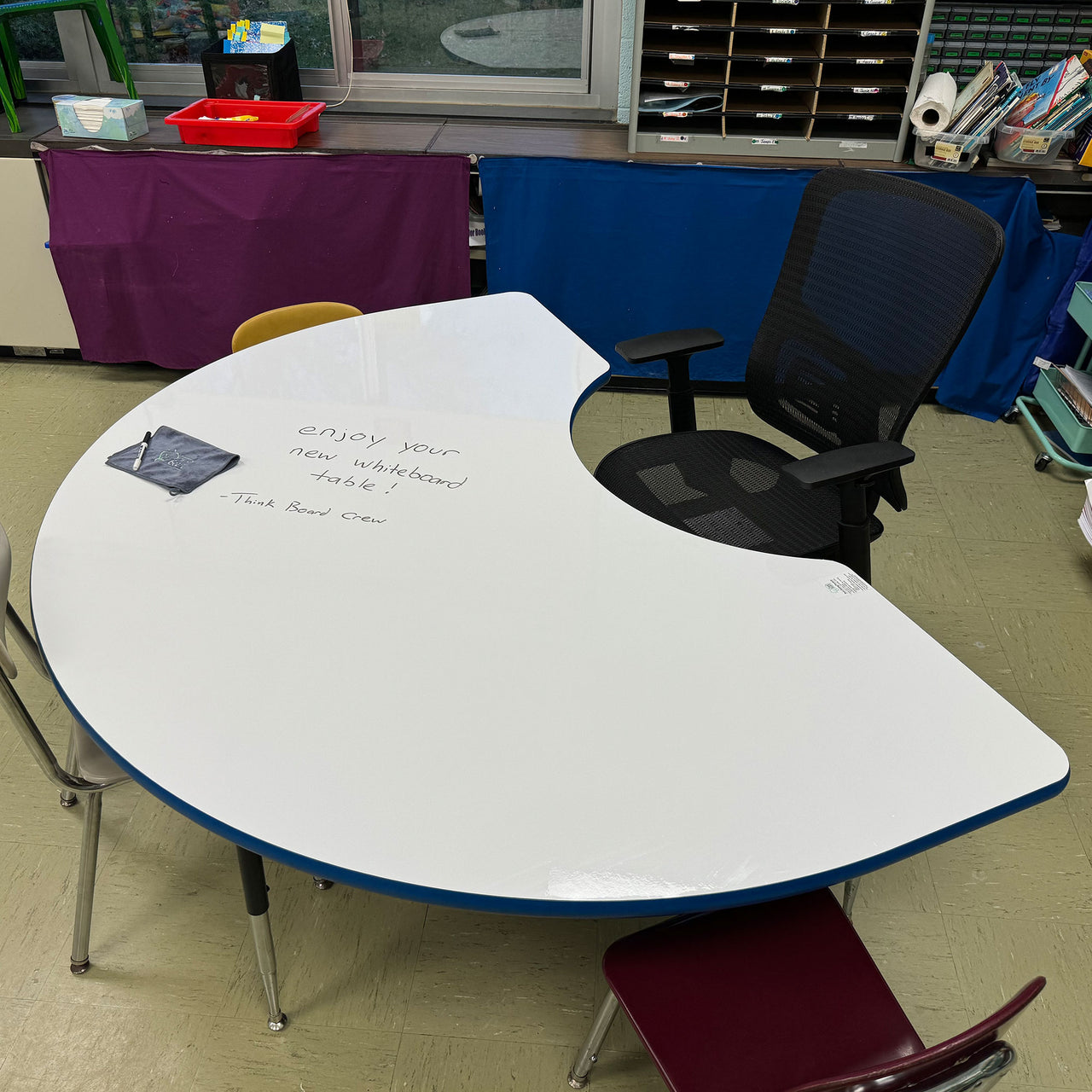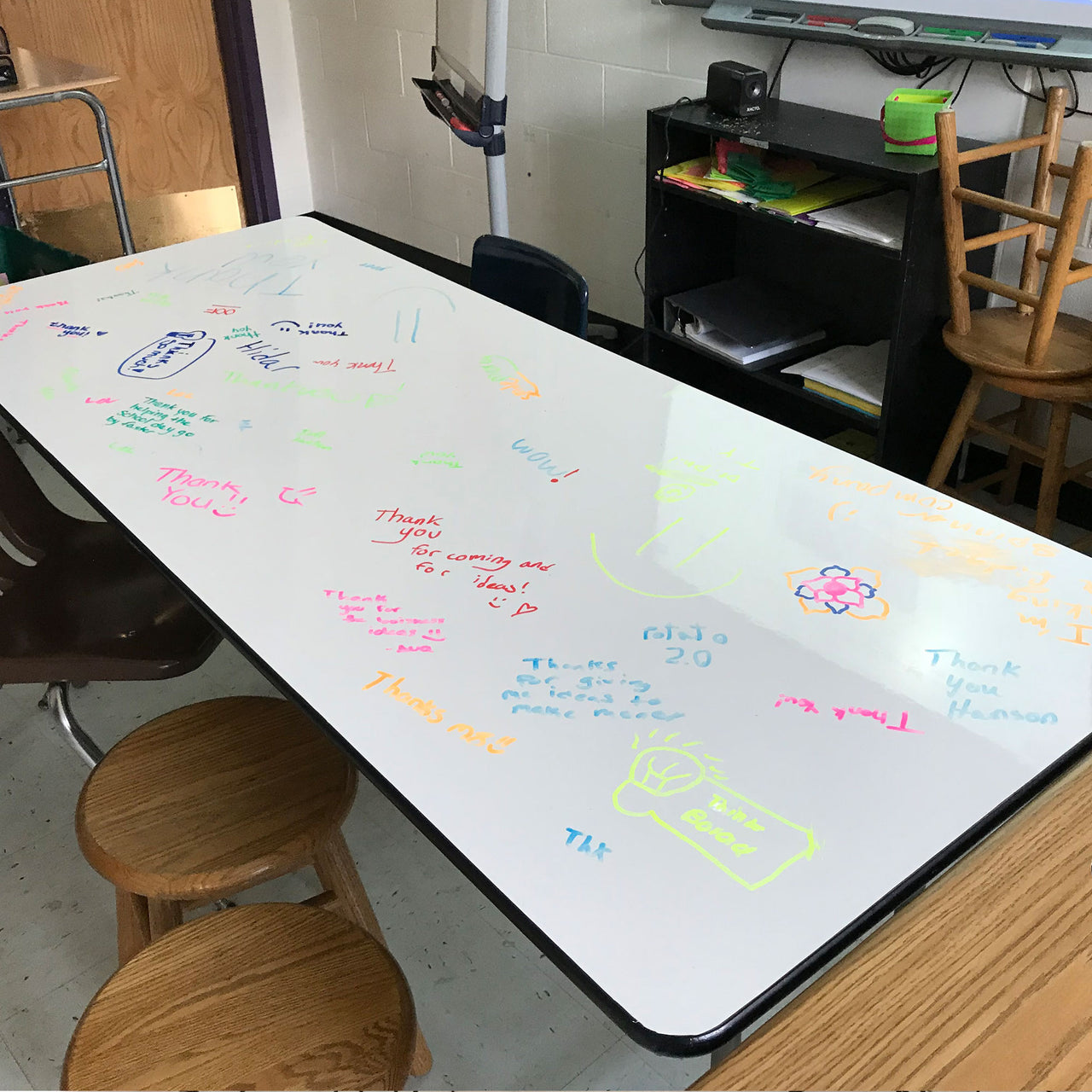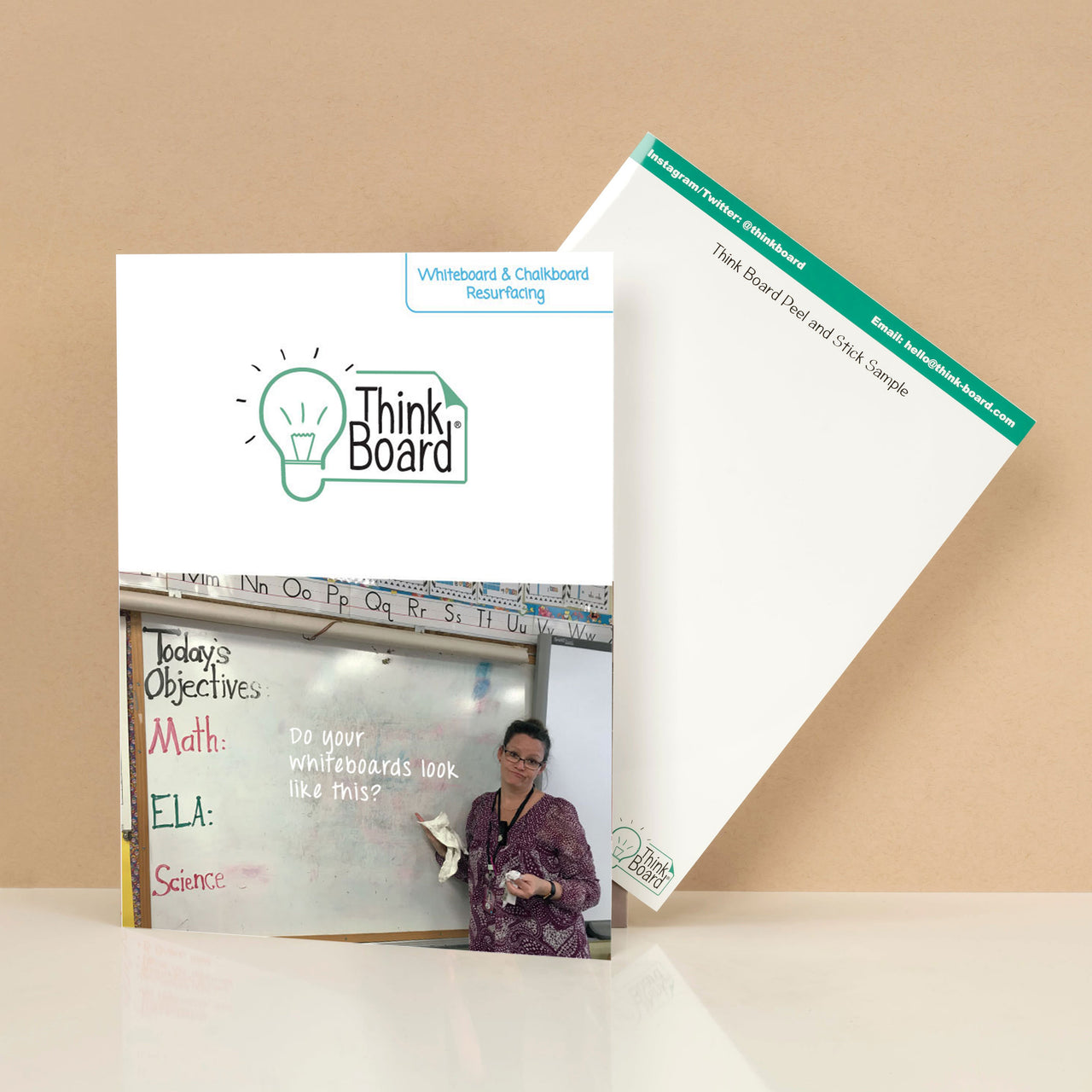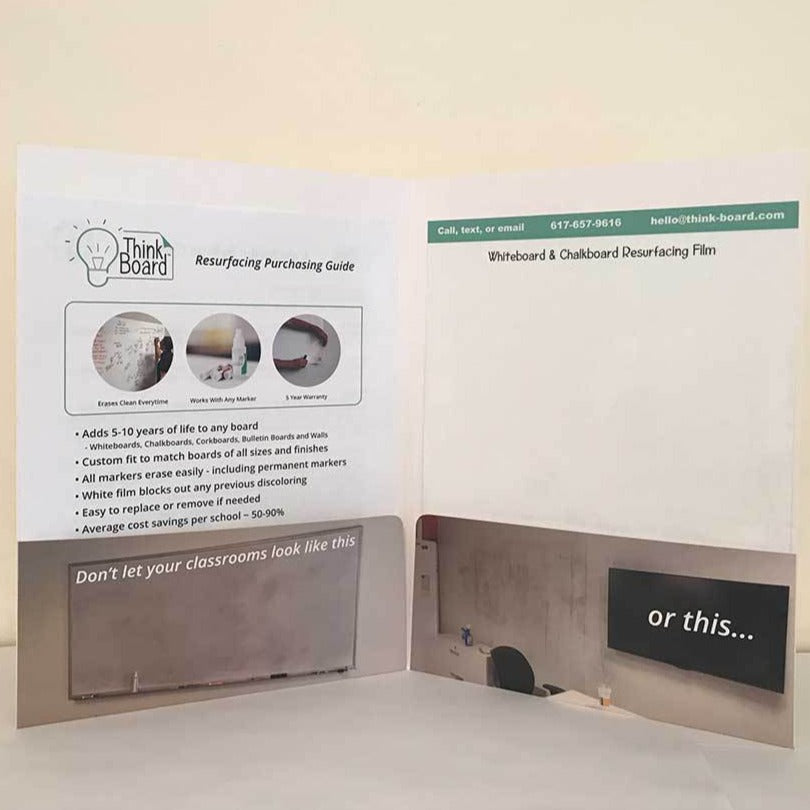3 Creative Ways to Keep Your Students Engaged (Especially During the Holidays)
Keeping students focused and on task can be a challenge, especially during the holiday season. Over the years, we’ve talked to hundreds of teachers about classroom design, teaching methods, tips, and tricks. Check out how these 3 creative teachers have changed the way their students work and collaborate in class.

1. Holly's Spanish Class
Holly has taught middle school Spanish for decades. Holly knows middle school, middle schoolers and she knows her craft. What she didn't know or expect is that having high-quality whiteboards on every student's desk keeps students engaged - writing and practicing longer. As soon as the textbooks are pushed aside and dry erase markers are pulled out, the students change.
Holly doesn't stop here either. In her classroom, the student’s desks are set up in a circle so that everyone can see each other when communicating in Spanish. Inside the circle, Holly dynamically guides her students with pointing gestures and silent mouthing for forgotten words. In the circle, Holly is also able to walk around with a handful of color markers and quickly make corrections and assess her students. She easily marks spelling mistakes, quickly writes out a list of conjugation rules to serve as a template, and erases extra letters or words with just a quick swipe of her finger. Every quick mark up creates an opportunity for more 1-on-1 interactions.
2. Amy's Color Coordination Technique
Amy teaches elementary. Her students sit around whiteboard tables in groups of 4, facing each other. Not all students nor subjects get maximum benefit seated in a giant circle. Different subjects can and should be taught in different environments. More importantly, teachers have to work with what they've got. Amy's technique is simple yet effective.
Color code student work.
Yup. Just color markers.
When she wants to see if her students understand their reading assignments, she has her students take notes or summarize readings on their table. Each student uses a different color. With just a glance from across a room, Amy can tell when a student might not be getting class material or is distracted. A student that is disengaged from across the room. Every simple assessment like that is a quick opportunity to learn where your time would be most impactful.
3. Devon's Around the Class Technique

Devon also teaches elementary. She also loves colors, particularly, pink. Pink bouncy balls, pink trays, pink balloons, pink flowers. Pink. Lots of pink.
Devon's room has been outfitted with bouncy balls and wobble stools for fidgeting students- keeping the kids constantly on their toes. One of Devon's most impressive skills is networking. She has an uncanny ability to find people who will provide pink things to her class. She also found us at a conference. We don't make pinkboards but she wanted us to outfit her classroom anyway. Her original goal was to resurface a bit of whiteboard at the front of the classroom but quickly realized that the tabletops, countertops, cabinets, walls, and radiator covers were all potential whiteboards for her students.
Having spaces all over the classroom for students to collaborate at and work from creates more movement in the classroom but Devon embraces this unique energy. She sends students across the classroom to work on little group activities and has groups sharing from different parts of the classroom. She leverages every corner of her classroom to keep her student's surroundings fresh and their blood pumping.
Whether it's a little more movement, color coding or personal time with students, a little more space to write down ideas and a quick way to evaluate the content is a combination that can be applied anywhere! We hope these ideas help you create and design your own techniques for your students in the coming weeks!
Blogging is new for us. Was this useful? Would you like more content about our teachers?
Leave some feedback below and let us know what else you'd like to read about. We'd love to feature your stories as well!


